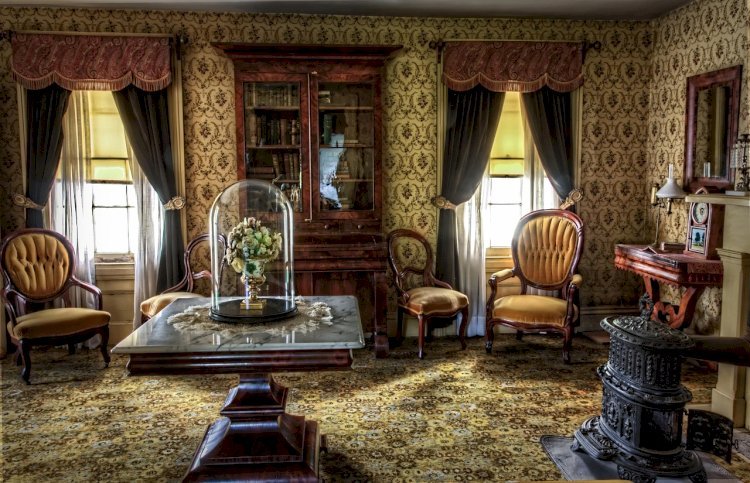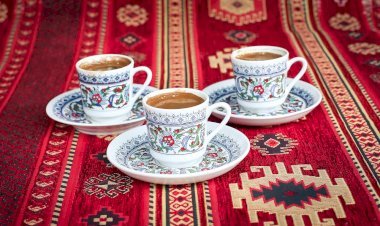Catherine the Great Furniture: A Glimpse into Imperial Splendor
Explore Catherine the Great Furniture: opulent palace furnishings, Neoclassical masterpieces, and museum-preserved treasures admired in 2025.

Catherine the Great Furniture stands as a timeless reminder of Russia’s imperial wealth, artistry, and cultural ambition. As Empress of Russia from 1762 to 1796, Catherine II transformed her palaces into showcases of luxury and refinement, blending European Neoclassicism with uniquely Russian craftsmanship.
Even in 2025, Catherine the Great Furniture continues to fascinate historians, collectors, and museum visitors. From the opulent halls of the Catherine Palace to the grand galleries of the State Hermitage Museum, her furnishings remain icons of imperial grandeur.
Catherine the Great and Her Vision for Interiors
Catherine the Great believed art and architecture were essential tools for shaping Russia’s global image. By commissioning leading European artisans and supporting Russian craftsmen, she used furniture and décor not just as palace decoration but as symbols of power and enlightenment.
Her interiors fused Rococo elegance with Neoclassical order, aligning Russia with cultural trends sweeping across France, Italy, and England during the 18th century.
European Influence on Catherine the Great Furniture
Catherine’s reign was marked by collaboration with Europe’s finest artisans.
-
François Rémond (France): A bronze master who created elaborate gilded mounts for furniture pieces.
-
David Roentgen (Germany): Known for intricate mechanical writing desks and marquetry, his works became part of Catherine’s private collection.
-
Italian and French Cabinetmakers: Introduced new construction techniques and decorative styles that gave Catherine’s interiors European refinement.
By inviting foreign talent, Catherine ensured her palaces rivaled Versailles or Schönbrunn, projecting Russia as a cultural powerhouse.
Charles Cameron’s Role in Shaping Style
The Scottish architect Charles Cameron played a key role in defining Catherine the Great Furniture. His Neoclassical interiors at the Catherine Palace and Pavlovsk Palace reflected symmetry, proportion, and intellectual beauty.
Cameron’s influence extended beyond architecture—he oversaw furniture selection and design. His aesthetic combined:
-
Classical motifs such as columns, medallions, and laurel wreaths
-
Fine woods with bronze or marble detailing
-
Balanced proportions that emphasized harmony and grandeur
Together, these elements established a distinct “Cameron-style” within Catherine’s reign.
The Amber Room: Jewel of Imperial Interiors
Among the most celebrated creations associated with Catherine the Great is the Amber Room at the Catherine Palace. Though not purely furniture, this chamber embodied the Empress’s taste for unmatched opulence.
-
Decorated with amber panels, mirrors, and gilded carvings
-
Once called the “Eighth Wonder of the World”
-
Looted during World War II and lost, but reconstructed in 2003
Today, the Amber Room remains one of the most iconic examples of imperial Russian design, and a central attraction for those studying Catherine the Great Furniture.
Russian Craftsmanship and Local Influence
While European artisans shaped much of the design, Russian craftsmen contributed significantly to the uniqueness of Catherine the Great Furniture.
They used:
-
Karelian birch for rich wooden surfaces
-
Ural malachite and local marbles for inlays and tables
-
Traditional carving techniques to integrate Russian motifs
This blend of imported style with domestic resources gave the furniture both an international elegance and a national identity.
Read Also: Kitchen Math Made Easy: How Many Tablespoons in 1/4 Cup (and Why It Matters)
Types of Catherine the Great Furniture
Catherine’s collection included a wide range of pieces, many of which survive today in Russian museums.
| Type of Furniture | Features | Notable Examples |
|---|---|---|
| Thrones & Chairs | Gilded wood, velvet upholstery, imperial insignia | State Hermitage Museum |
| Cabinets & Desks | Mechanical features, fine marquetry | Roentgen’s writing desks |
| Tables | Marble tops, bronze mounts | Pavlovsk Palace collection |
| Beds & Sofas | Neoclassical symmetry, ornate fabrics | Catherine Palace displays |
| Ceremonial Pieces | Designed for state functions | Throne halls at Tsarskoe Selo |
Where to See Catherine the Great Furniture Today
In 2025, visitors can admire Catherine the Great Furniture at some of Russia’s most famous cultural institutions:
| Location | Highlights |
|---|---|
| State Hermitage Museum (St. Petersburg) | Thrones, desks, and palace furnishings |
| Catherine Palace, Tsarskoe Selo | Amber Room, Neoclassical interiors |
| Pavlovsk Palace & Museum Reserve | Cameron’s Neoclassical designs with original furniture |
| International Exhibitions | The Romanovs Collect has toured Europe and the U.S. |
Digital innovations such as virtual museum tours and 3D restorations are also making Catherine’s collection globally accessible.
Legacy of Catherine the Great Furniture
Catherine’s furnishings are more than luxury décor—they represent a political and cultural project. Her interiors projected Russia as enlightened, powerful, and connected to European trends while still rooted in Russian identity.
In 2025, ongoing restoration and digital documentation projects ensure that Catherine the Great Furniture remains not only preserved but re-imagined for global audiences.
Conclusion
Catherine the Great Furniture is a lasting symbol of imperial splendor and cultural ambition. Blending Neoclassical harmony with Russian artistry, these pieces embody Catherine’s vision of a modernized empire.
From the Amber Room to the meticulously crafted thrones, her furnishings remain icons of history, art, and power. Thanks to conservation efforts, museum displays, and digital innovation, Catherine the Great Furniture continues to inspire awe centuries after its creation.
Frequently Asked Questions (FAQ)
Q1: What styles influenced Catherine the Great Furniture?
It was strongly shaped by Neoclassicism, with influences from Rococo and the work of European designers such as François Rémond and Charles Cameron.
Q2: Where can I see Catherine the Great Furniture today?
You can view it at the Hermitage Museum, Catherine Palace, and Pavlovsk Palace, as well as through international exhibitions.
Q3: Did Russian craftsmen play a role?
Yes. Local artisans used Russian woods like birch and marbles such as malachite to create unique designs.
Q4: What is the significance of the Amber Room?
The Amber Room epitomized Catherine’s taste for opulence. Although lost during World War II, its reconstruction remains a major attraction.
Q5: How is Catherine the Great Furniture preserved today?
Through museum conservation, restoration projects, and digital 3D tours that bring imperial interiors to modern audiences.
Read More: Pedro Vaz Paulo: Executive Coaching & Leadership Insights in 2025

 alissaperry
alissaperry 








![Ashcroft Capital Lawsuit: Full Timeline, Allegations, and Latest Updates [2025]](https://thebritishreport.com/uploads/images/2025/04/image_380x226_680c8132557af.jpg)













